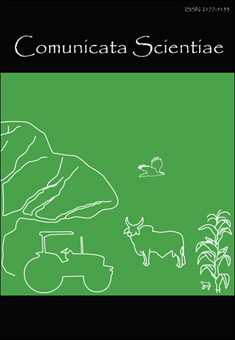Growth and changes on morphology and physiology of heliconias according to different shading environments
DOI:
https://doi.org/10.14295/cs.v7i2.884Keywords:
floricultura tropical, pigmentos fotossintéticos, intensidade luminosa.Abstract
The use of shading has been widely used for production of seedlings, flowers and ornamental plants, aiming to minimize the damage from the excess of luminosity. This research evaluated the effect of different shaded environments [0% (full sun); 35% and 50% of shading and overlapping screens of 35%+50%] on morphophysiological aspects and growth of Heliconia psittacorum cv. Golden Torch and Heliconia bihai cv. Humilis in Bom Jesus county, Piaui state, Brazil, from August, 2012 to July, 2013. The experiment was carried out in a completely randomized design with treatments arranged in a 2 x 4 (Species x Shading) factorial, with six repetitions. Plants of H. bihai cv. Humilis showed higher leaf area compared to H. psittacorum cv. Golden Torch when the corresponding overlapping screens of 35% + 50% was applied, indicating that the two species have different morphological mechanisms for adaptation in shaded environments. Plants grown in full sun (0% of shade) presented lower growth (height and leaf area) and lower chlorophyll content. The 50% of shading providedwas effective to achieve the desired establishment and growth of H. bihai cv. Humilis and H.Psittacorum cv. Golden Torch, grown in pots.
Downloads
Downloads
Published
How to Cite
Issue
Section
License
All articles published may be reproduced or utilized in any form or by any means whether specified Comunicata Scientiae, author(s), volume, pages and year. The authors are responsible for all the statements and concepts contained in the article.




